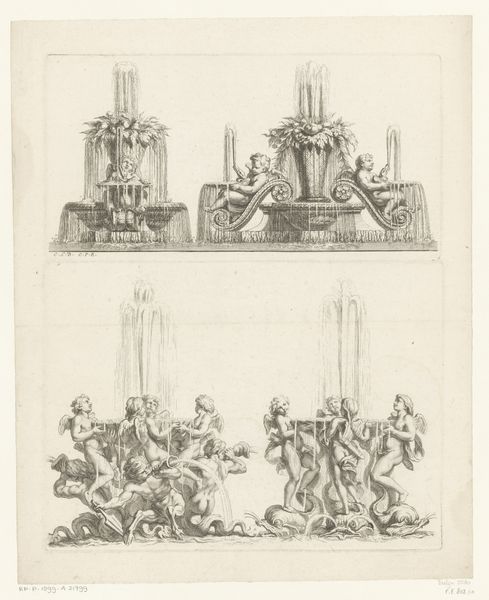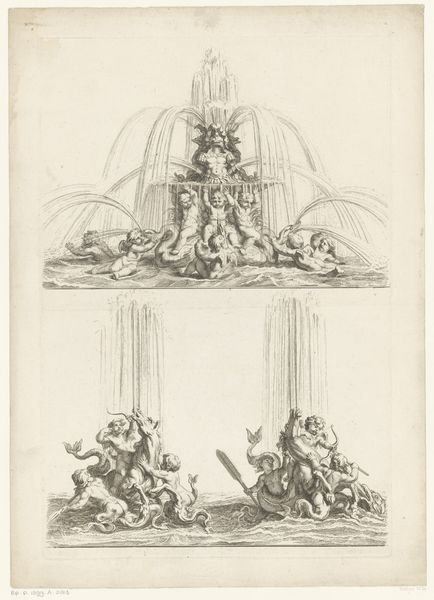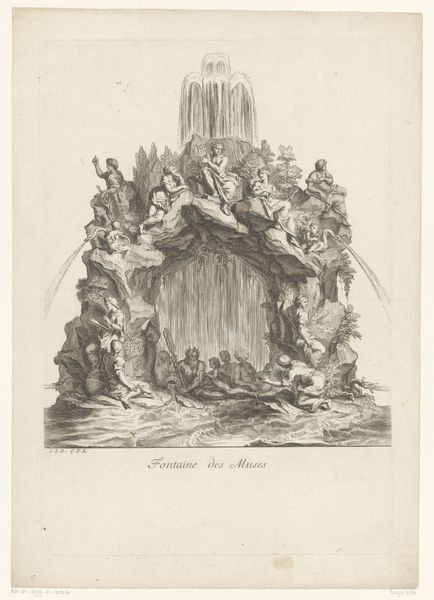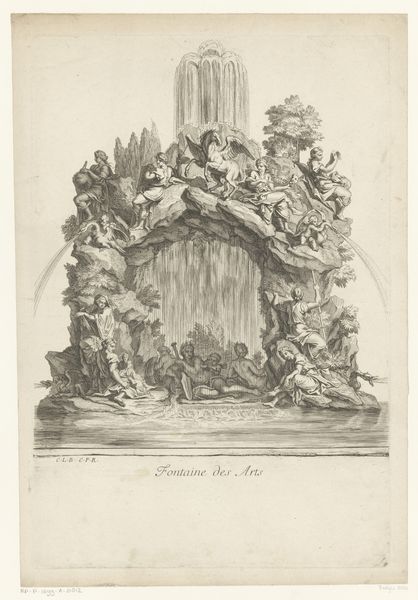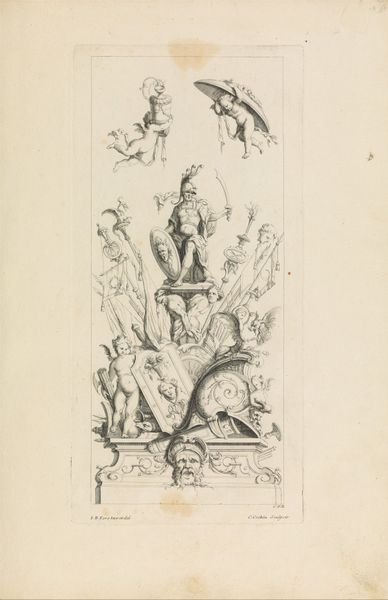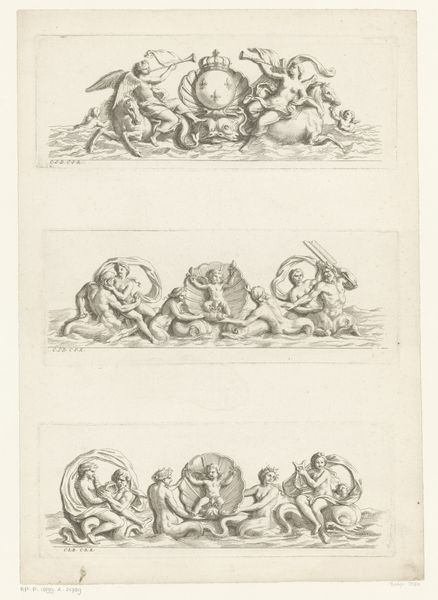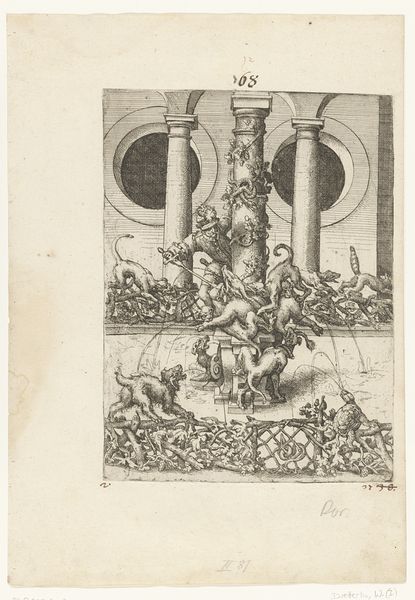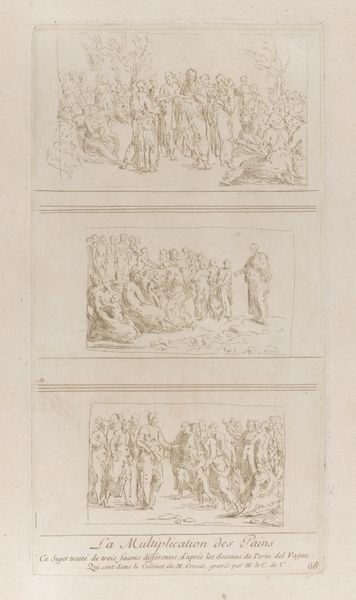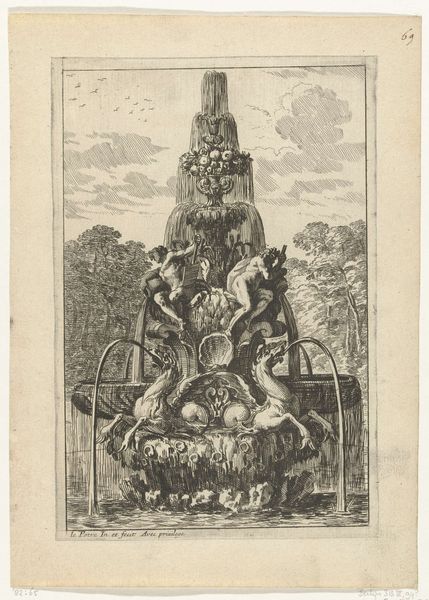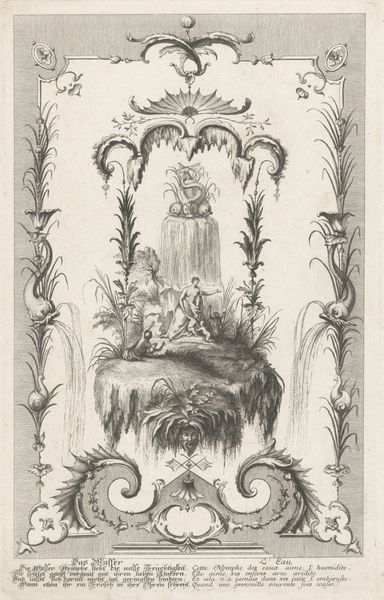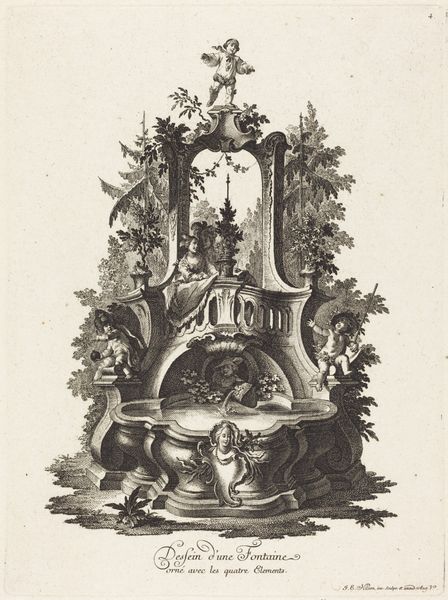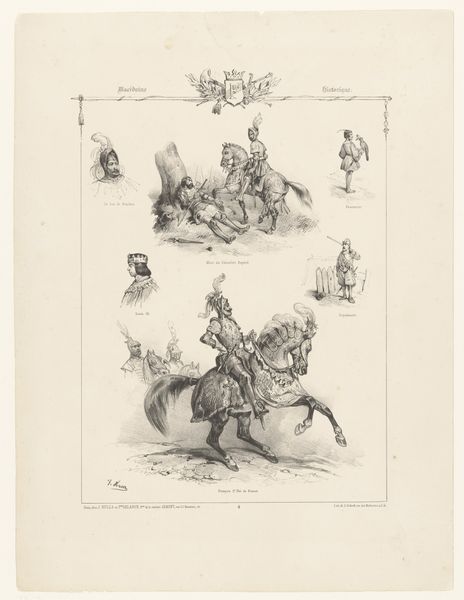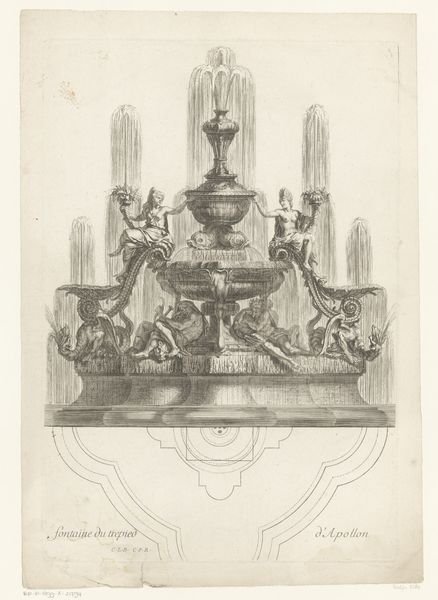
#
light pencil work
#
quirky sketch
#
pencil sketch
#
personal sketchbook
#
sketchwork
#
pen-ink sketch
#
sketchbook drawing
#
pencil work
#
storyboard and sketchbook work
#
sketchbook art
Dimensions: height 214 mm, width 293 mm, height 214 mm, width 294 mm
Copyright: Rijks Museum: Open Domain
Editor: This is "Fonteinen met Aeolus en Scylla" – Fountains with Aeolus and Scylla – by Louis de Châtillon, dating from around 1672 to 1686. It’s currently held at the Rijksmuseum. It appears to be a preparatory drawing in ink, or perhaps silverpoint, for a more substantial work. I find the composition quite striking; they almost feel like two worlds coexisting on one page, each with a god in repose amidst a tumultuous fountain. What grabs your attention most in this piece? Curator: Ah, yes! It tickles my fancy because it reminds me how fleeting initial conceptions can be. Chatillon gives us a sneak peek behind the curtain, a privileged seat in the artist’s mind. The raw sketch feel makes me imagine him pacing, stopping abruptly, grabbing his pencil... almost like capturing a dream before it vanishes! Look at how economically he suggests form; it's like squinting at a half-remembered spectacle. Don’t you get a sense of immediacy? Editor: I do see the energy you describe. It almost looks like a doodle at first glance but becomes much grander and intentional as you look closer. Were sketches like these common in preparation for larger fountains in that period? Curator: Precisely. Think of it: These fountains, dedicated to Aeolus, god of wind, and Scylla, a sea monster, would have been incredibly grand spectacles, celebrating power and artistry. The sketches became critical tools for visualizing the eventual monument. How do you think understanding their mythological context enriches our interpretation? Editor: Well, knowing the figures are Aeolus and Scylla adds a dramatic layer to the dynamic water features. I think understanding the "why" helps in seeing this not just as fountains, but as stages for a performance of power, really amplifying that original sense of grandeur. It feels much more thoughtful now! Curator: Exactly! Art is seldom about standalone objects but a confluence of stories. Even the sketchiness here carries a story; this is where grand ideas find their humble beginnings.
Comments
No comments
Be the first to comment and join the conversation on the ultimate creative platform.

